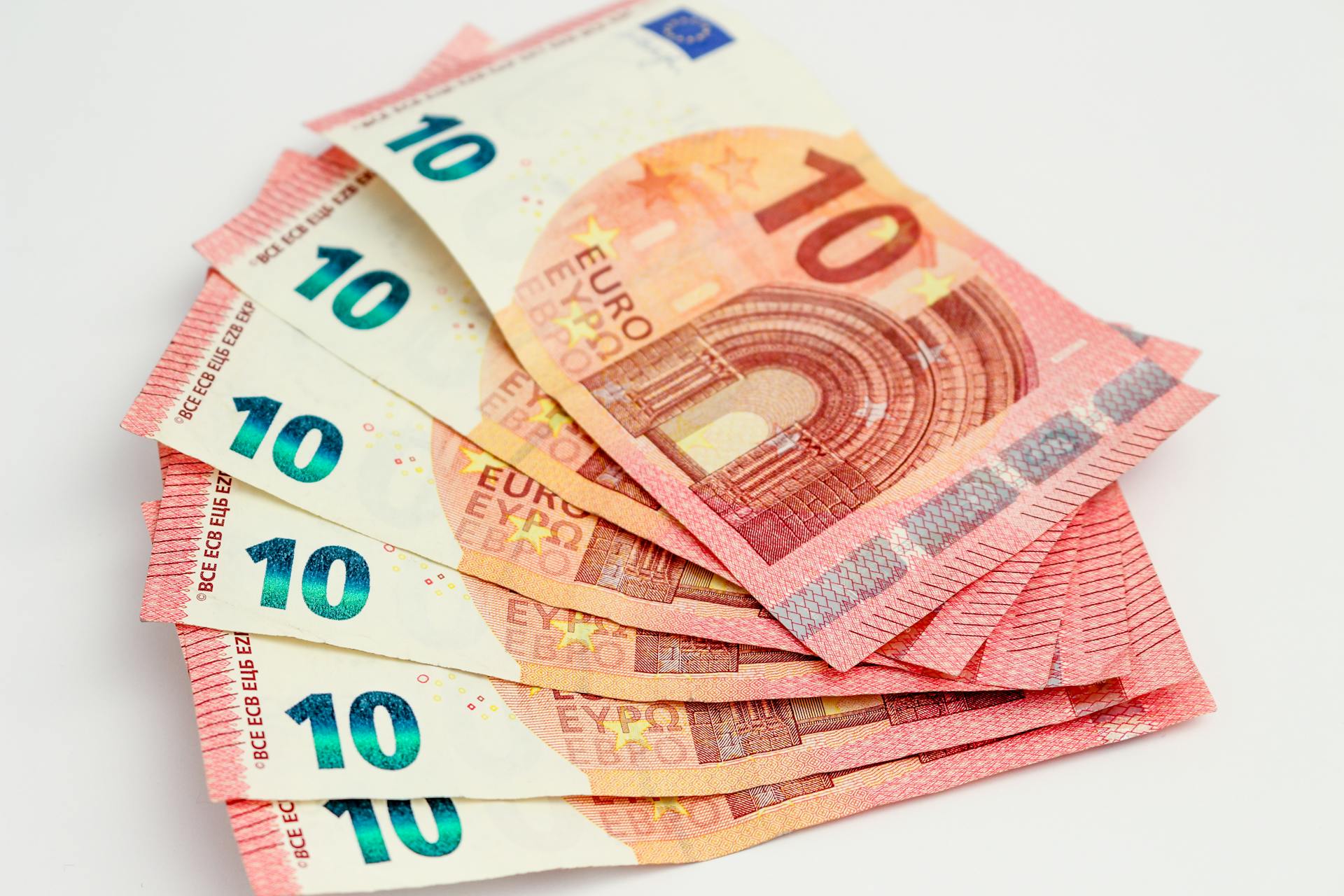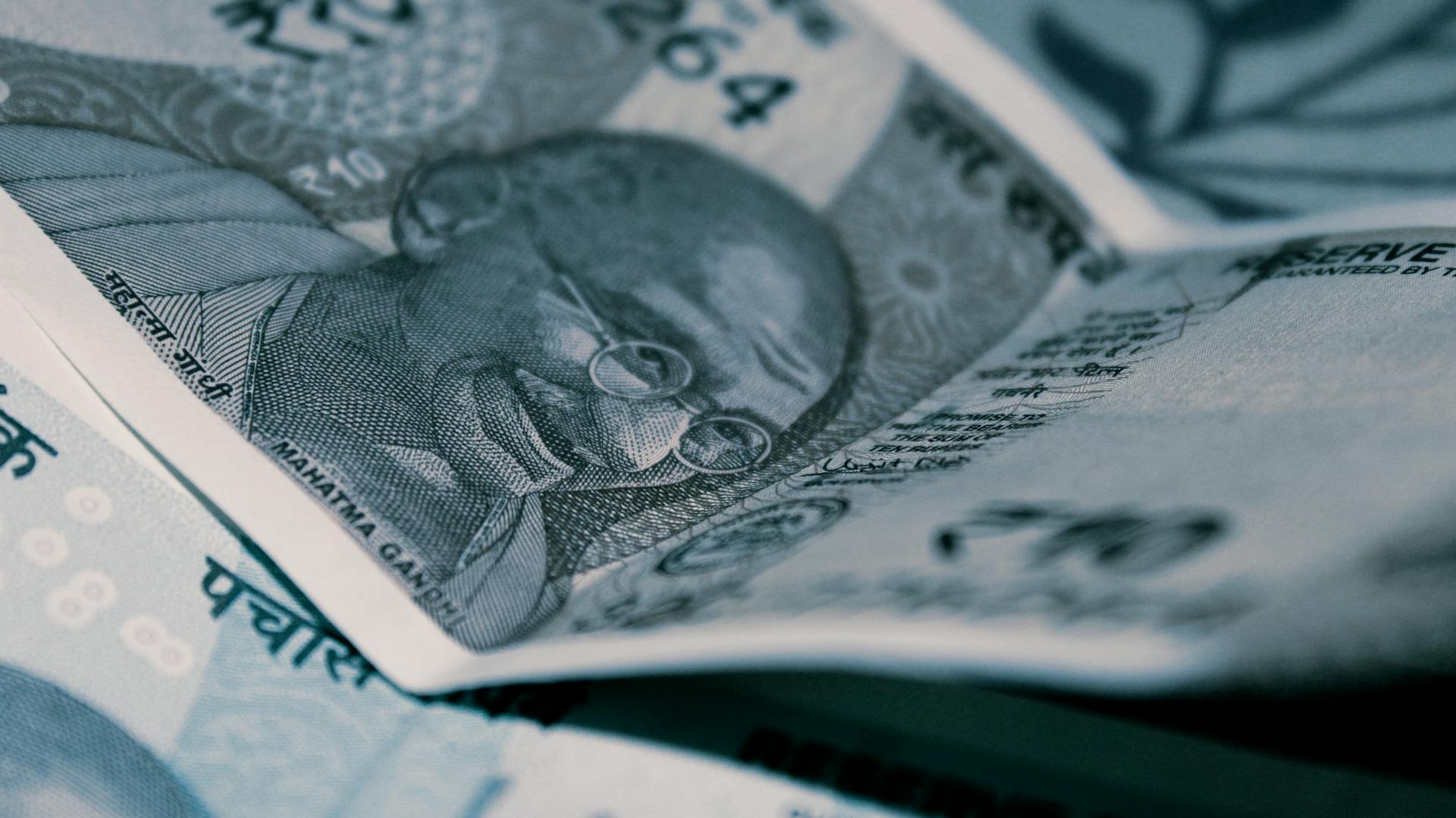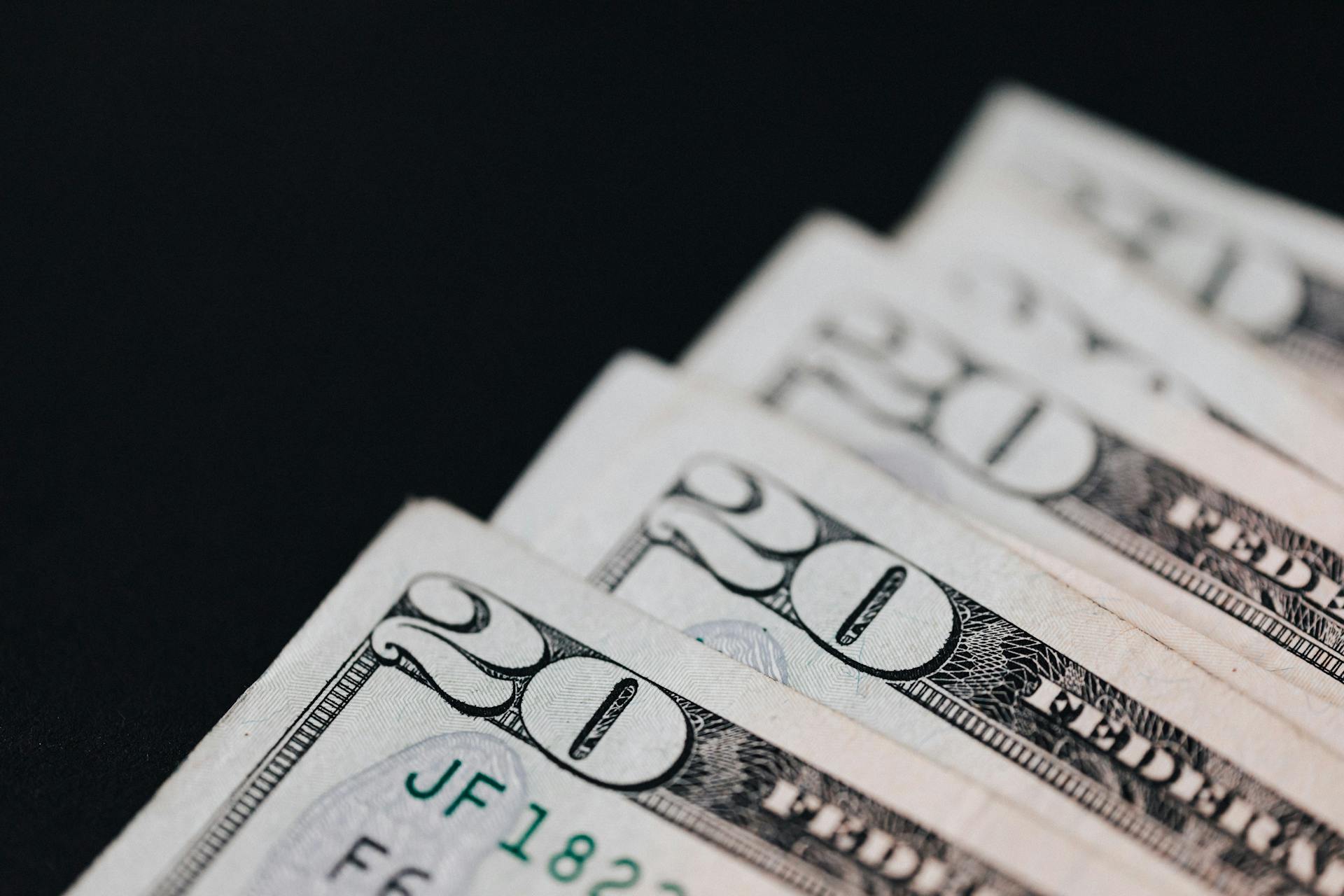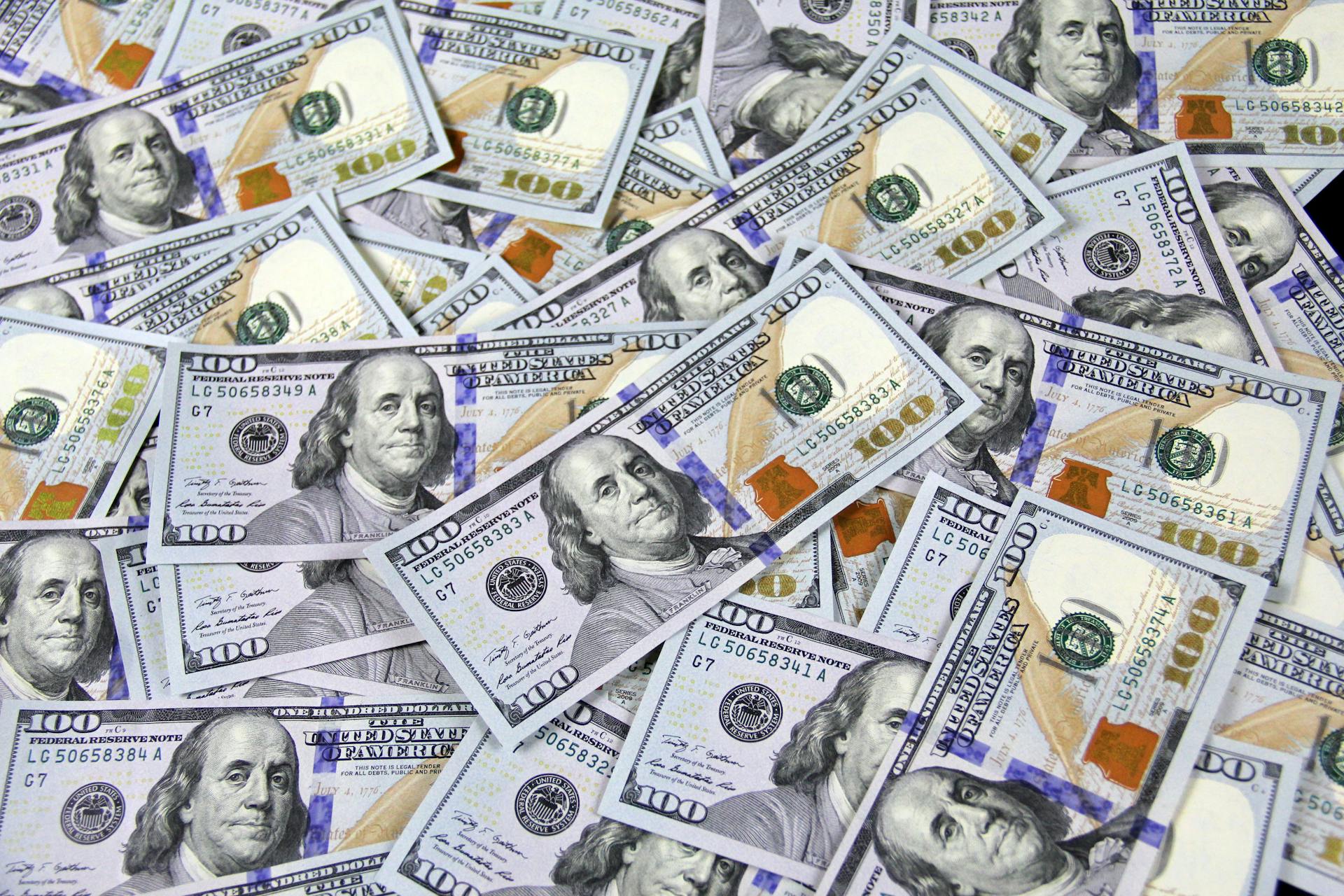
Estonia's official currency is the Euro, which replaced the Estonian kroon in 2011. This change was a significant step towards adopting the European single currency.
The Euro is divided into 100 cents, making it easy to understand and use. You can exchange your money for Euros at banks, currency exchange offices, or use an ATM to withdraw cash.
Estonia's currency is widely accepted in the country, and you can also use credit and debit cards for transactions. This makes it convenient for tourists and locals alike to make purchases and pay for services.
In Estonia, you can find ATMs and currency exchange offices in most cities and towns, making it easy to access cash when needed.
Worth a look: Currency in Italy 2023
Estonia Currency History
The Estonian kroon has a rich history dating back to 1924 when it was first introduced as a unit of account. The kroon replaced the mark at a rate of 100 marks = 1 kroon.
In 1924, the kroon was pegged to the Swedish krona at par, with a gold standard of 2,480 KR = 1 kilogram of pure gold. This standard was backed by real reserves, which helped to secure the credibility of the kroon.
The kroon was subdivided into 100 senti, providing a clear and understandable currency system. The Estonian kroon was initially pegged to the Swedish krona, which helped to establish trust in the currency.
In 1928, the 1 kroon note was introduced, featuring the building of the Bank of Estonia on the obverse and the Ajutise Valitsuse määrus riigikassatähtede väljaandmise kohta on the reverse. The note measured 145 millimeters in width by 90 millimeters in height.
The first 1 kroon note was designed by Estonian painter Roman Nyman and was predominantly green in color. The note was later replaced by a new 1 kroon note in 1992, which was predominantly orange and brown in color.
The new 1 kroon note was designed by Urmas Ploomipuu and featured Estonian painter Kristjan Raud on the obverse and the Toompea Castle in Tallinn on the reverse. The note measured 139 millimeters in width by 70 millimeters in height and included security features such as a watermark and security strip.
You might enjoy: Currency Pegged to Usd
Here is a list of the Estonian kroon banknotes:
- 1 kr
- 2 kr
- 5 kr
- 10 kr
- 20 kr
- 25 kr
- 50 kr
- 100 kr
- 500 kr
The Estonian kroon went off the gold standard in 1933, devalued 35%, and obtained a currency peg with sterling at £1 stg = 18.35 KR. This peg was maintained until the Soviet occupation of 1940, when the kroon was exchanged for the Soviet ruble at a rate of 1 Rbl = 0.8 KR.
Banknotes and Coins
Estonia's currency has a rich history, and understanding its evolution can be fascinating.
The first coins of the Estonian currency were introduced in 1928, featuring nickel-bronze 25 senti pieces. These were followed by various denominations, including bronze 1 sent in 1929, silver 2 krooni in 1930, and more.
In 1927, before the official introduction of the kroon, 100 mark banknotes circulated overprinted as "ÜKS KROON" (1 kroon). Eesti Pank introduced 10 krooni notes in 1928.
Here's a list of the 1928-1935 issue banknotes:
In 1992, Estonia introduced new banknotes in denominations of 1, 2, 5, 10, 25, 100, and 500 krooni.
Frequently Asked Questions
Can you use US dollars in Estonia?
No, US dollars are not widely accepted in Estonia. You can exchange them for euros at a bank or currency exchange counter, but be prepared to have your bills checked for condition.
Does Estonia have its own currency?
No, Estonia does not have its own currency. The euro has been the official currency of Estonia since 1 January 2011.
Sources
- https://www.foreigncurrencyandcoin.com/product/estonia-100-krooni/
- https://www.politico.eu/article/estonia-bullish-about-swift-adoption-of-single-currency/
- https://currencies.fandom.com/wiki/Estonian_1_kroon_banknote
- https://en.wikipedia.org/wiki/Estonian_kroon
- https://www.xe.com/currencyconverter/convert/
Featured Images: pexels.com


